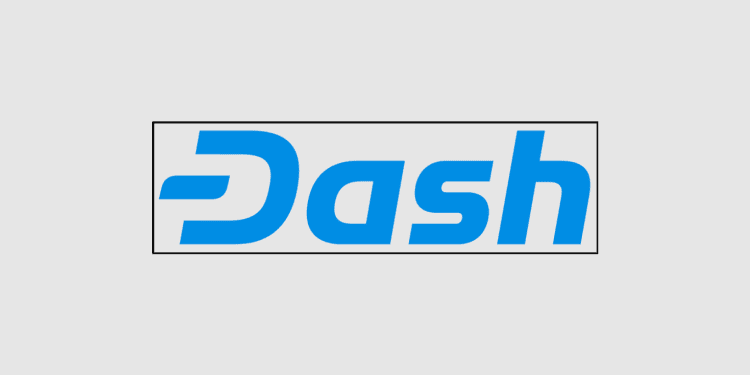- Dash is a two-tier blockchain network that combines PoW with Tendermint consensus.
- The latest hard fork update of Dash, V19, failed.
- Dash experienced an 18-hour network outage.
Dash’s 2-Tier Network
The Dash blockchain originated in 2014 as a hard fork of Litecoin and is a complex protocol that relies on a two-tier network for operability. The first tier of the Network consists of a Proof of Work (PoW) Layer 1 chain with mining nodes to validate user transactions and create new block hashes. The second network tier is a Layer 2 chain comprised of masternodes that use Dash’s proprietary Tenderdash consensus mechanism—a forked version of Tendermint—to govern the Dash ecosystem and ensure the legitimacy of transactions validated in the first network tier.
Masternodes Explained
Masternodes don’t typically validate user transactions to form new blocks but verify the authenticity of already validated transactions. Masternodes access more on-chain resources than mining nodes and are utilized for specific tasks like managing network governance.
Masternodes store all blockchain data, contain a ledger of each block hash, and information about all recorded validated user transactions. Dash masternodes complete tasks by complying with a “Proof of Service” protocol and providing the Network with a record of assurance that they operate according to their designated responsibilities.
Tenderdash Explained: Threshold Consensus Signing and Dash Masternode Quorums
Masternodes employ the Tenderdash consensus mechanism to vote on governance proposals. Within Tenderdash, masternodes use a threshold consensus signing mechanism to decide whether or not to pass a governance proposal. In threshold consensus signing, a group of participants collaborates to create a digital signature, representing their agreement on the proposal.
A threshold signature forms when several masternodes in the Network above a certain threshold come together and contribute their unique cryptographic signatures to create a final signature. This threshold can be defined as a minimum number or percentage of participants required for the signature to be considered valid. Once the proposal has an established threshold signature, it is passed and sent to the rest of the Dash network for implementation.
Tenderdash also forms quorums, comprising a few randomly selected masternodes from the global masternode list. Quorums take turns being active and work together to govern Dash by approving or rejecting network proposals. A quorum threshold signature represents the vote of all the masternodes in that quorum, and decisions are made much faster when quorums rather than every individual masternode establishes threshold signatures.
The key idea behind threshold consensus signing is to distribute trust and decision-making among multiple participants, making it more resilient to faults or attacks. Once proposals are decided on within the second tier of the Dash’s L2 chain, they are sent to the first network tier to be secured on the main PoW L1 chain. Dash’s two-tier Network combines the security of PoW with the finality of Tendermint for fully encrypted transactions, short proposal voting, and efficiently made governance decisions.
So what happened?
Dash encountered a temporary setback during the activation of its highly anticipated Dash Core v19 hard fork and went offline for nearly 24 hours—as revealed by Chief Technical Officer Samuel Westrich in a tweet on the morning of May 21:
During downtime, Dash developers emphasized that blocks and transactions needing more ChainLock and InstantSend locks should not be considered final. These two security features, unique to Dash, play a crucial role in ensuring the integrity and security of the blockchain.
As a result of the blockchain stall, Binance temporarily suspended the distribution of Dash mining rewards—this decision aimed to prevent any potential disruption or inconsistencies in the mining ecosystem during the upgrade process.
The initial purpose of the Dash Core v19 upgrade, announced on April 10, 2023, was to bolster the blockchain’s security by implementing BLS signatures. Additionally, the promotion will introduce enhanced masternode functionality and wallet improvements. As a result, the release of v19.0.0 has been rescheduled for June 14.
What happens when a hard fork fails?
When a hard fork fails, a blockchain’s planned upgrade or split encounters significant issues, preventing successful implementation. Consequences include:
- Network fragmentation.
- Creating incompatible versions of the blockchain.
- Loss of trust in the project and development team.
- Disruptions to services.
- Features like pausing customer deposits and withdrawals.
A fragmented network can lead to the creation of multiple incompatible versions of the blockchain. This can confuse users, as transactions and data may not be recognized uniformly across the different forks. It can also create a divergence in the community, with some participants supporting one fork and others supporting another.
In extreme cases, if a hard fork fails catastrophically, the Network may need to consider a rollback or reversal of the attempted upgrade. This involves reverting the blockchain to a previous state, effectively undoing the changes introduced by the failed hard fork. However, such actions are typically seen as a last resort and can have significant implications, including undermining the immutability and credibility of the blockchain.
Looking Ahead
Despite these recent challenges, Dash remains committed to improving its blockchain’s security and functionality. With the development team’s forthcoming releases and ongoing efforts, the Dash community anticipates a strengthened ecosystem supporting its vision for efficient and secure decentralized transactions.














